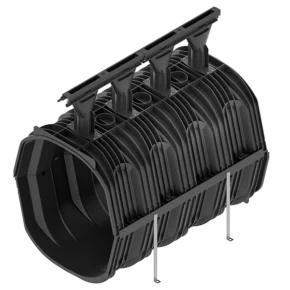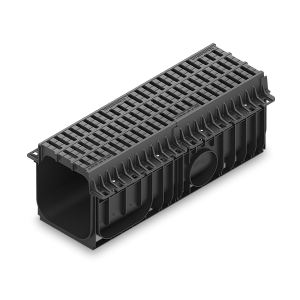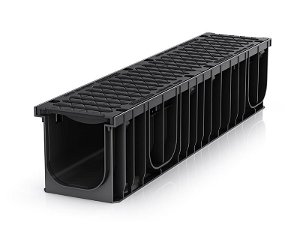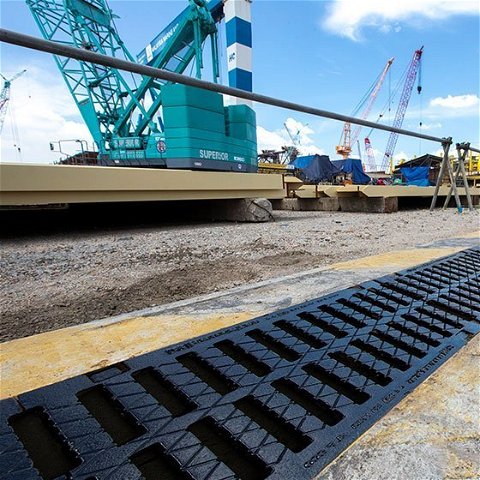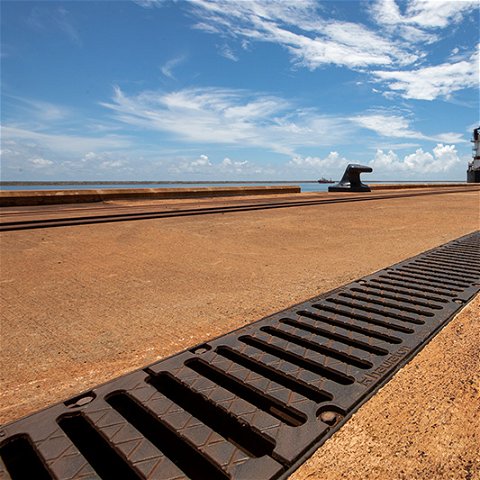Heavy duty drainage for container terminals & ports
HAURATON drainage products are stable and durable, have efficient hydraulic performance and contribute to flood prevention by either retaining water on site for ground percolation or by quick removal through effective surface drainage and transport for discharge to underground pipe networks.
HAURATON drainage solutions for container terminals & ports
HAURATON have supplied surface drainage systems to over 100 major ports, container terminals and harbours around the world. Understanding the certain requirements drainage has to withstand, makes HAURATON’s port drainage systems known for their reliability and overall performance.
–
Moulded as an integral part of the channel body
Ductile iron slotted top
Cast top with lateral concrete anchoring
Ductile iron
– Constant depth
– Stepped fall
– Step fall (for NW 200)
– Hydraulic gradient
– Constant depth
– Stepped fall
– Radial installations possible
– Large channels for retention
– Channel run without slotted top achievable, for example, under planted areas
– Cable installations can be threaded though throat voids of the channel
-Material combination of recycled PP and ductile iron for adaptability on the construction site and robustness
-Side wings for optimum connection to the concrete surface
-No screws and loose parts on the surface
-Connection between channel and cover encased in concrete for extra safety
– Channel and cover = one component
– Self-centring screw –> automatically finds the correct position
– Polypropylene channel body can be easily machined on site
Port drainage project
Drainage requirements for container terminals & ports
Most especially in container terminals and ports, the drainage system must cope with significant challenges, including constant traffic with extreme loads, dynamic forces, high surface impacts and point loads, material abrasion and corrosive environments.
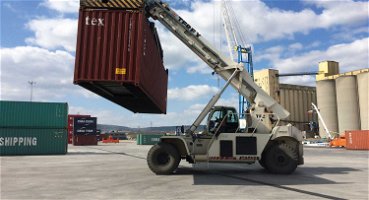
Reach stackers, which can achieve a total weight of 180 tons, are often used for handling goods. The drainage system must safely and permanently withstand the immense dynamic transverse and vertical forces that arise from the manoeuvring of these vehicles.
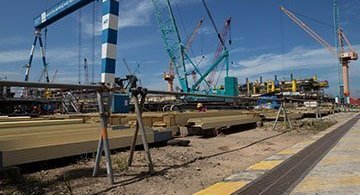
During heavy rainfall, there is a risk of surface ponding with the resulting danger to assets. The drainage system must have a high hydraulic capacity to effectively drain, retain and discharge often high volumes of surface water.
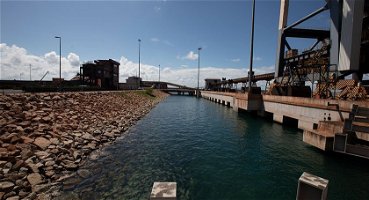
In ports, the United Nation UN Sustainable Development Goals (SDGs) apply to the protection of the ecosystem and freshwater resources. The seaport drainage system must therefore ensure that surface water run-off is intercepted and discharged into the port-specific stormwater treatment plants.
Further requirements:
Strong, durable & corrosion resistant to chemicals, fuels & salts
Cost-effective drainage design & installation
Easy & quick installation with low long-term maintenance costs
